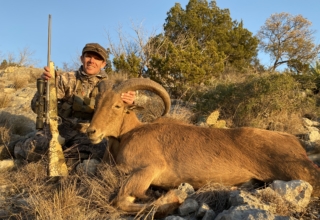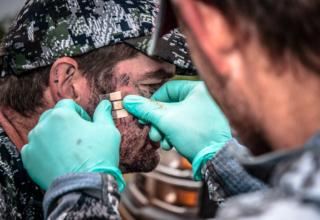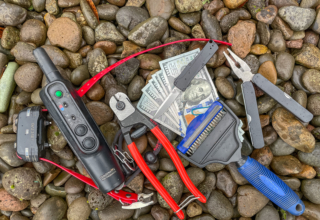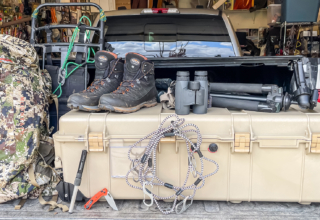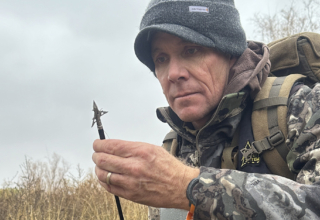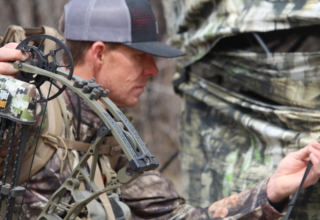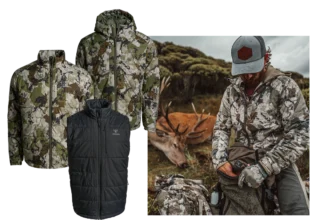Elk are giant creatures that dwell in some of the most jaw-dropping places on Earth. Don’t think their size makes them an easy target. A bull and his cows can vanish into thin air. If you plan to head West, you best prepare for rugged terrain, inclement weather, and exhausting days on the mountain. And if you hunt in an OTC or easy-to-draw area, you better be ready to get on the trigger if you see a bull — any bull.
by Scott Haugen
By daylight, my buddy and I could start glassing for elk. Three hours earlier, we were saddling horses and bundling up for the long ride in cold temperatures.
Tying off the horses in a draw, we hiked to the top of a rocky bluff to begin glassing. There was barely enough light to see across the canyon. But the sun provided enough glow to see light-colored bodies of elk; one was lighter in color, almost white. It was a bull. A nice bull.
At over 800 yards, it was too far to shoot with the rifle I had on this hunt. So, we made a plan to get closer. Unfortunately, moments before I got to where I wanted to shoot from, the whole herd snuck into sparse pine trees and bedded down. With over two dozen cows and swirling winds that would not stabilize, we waited. We didn’t move until dark. We hoped the herd would feed from the trees, but they never did.
We sat in the same spot, huddled behind a rock, for over eight hours. Winds howled more than 40 mph, which was cold, and dropped the Mercury into the low 30s. We hopped on the horses at dark and rode three hours off the mountain.
Elk hunting gets over-romanticized, but the truth is, elk hunting is usually extremely difficult. The days are long and the nights are short. Your body screams in pain, and you may repeat the process I just penned for a week and never even see a bull.
Before daylight the following morning, we were back in the same spot. When we had enough light, we began glassing for elk. We didn’t see a thing. We rode the horses to where we’d watched the elk the day before and found where they retreated out the backside of the trees. They moved through the snow, so we followed their tracks. We caught up to them seven hours later, and I killed the bull. We didn’t get back to the trailhead until 2 a.m.

Don’t make the mistake of thinking an elk hunt will be easy just because you hold a rifle elk tag. Whether you purchase an over-the-counter tag or draw a special permit in the lottery, public land elk hunting is hard. There are many factors to contend with, including pressure from fellow hunters, elk migration timings, harsh weather, and rough country to conquer.
On another public land elk hunt, two buddies and I rode our horses 18 miles into the wilderness. We got camp set up right before dark, and it started snowing. We awoke to a collapsing tent and over three feet of snow in the middle of the night. Come daylight, visibility was so limited there was no way to go hunting. Another foot of snow had fallen, and given we were just below the 10,000-foot mark, we decided to bail. Quickly we tore down camp and got the pack string headed off the mountain.

On our way down, we met a game officer riding up the trail to get elk hunters out of the hills as quickly as possible because the unforeseen storm would be severe. He told us seven feet of snow was projected to fall where we’d camped. It could have been disastrous had we stayed and tried waiting out the storm. None of us killed elk on that hunt.
One October, I was in the breaks of Idaho’s Salmon River. The land was some of the most rugged I’d ever set foot in, and there were places that, had I seen a bull, I wouldn’t have shot it because I couldn’t have handled getting it out. But, there was hope. That fall was unseasonably warm, and bulls were still bugling. A buddy and I hiked to a timbered point overlooking a vast drainage with open mountainsides. I let out a bugle, and four bulls immediately answered. Minutes later, I was working seven bulls; they were everywhere. But as expected this time of year, many were rag horns, small bulls I didn’t care to shoot.
For three days, we called, hiked, and called some more. I called in over a dozen bulls within 40 yards, but no big bulls worth pulling the trigger on — not with the tag I held.
A dandy bull stepped from the timber on the fourth morning and replied to my bugle. The heavy-racked bull had a distinct, raspy tone. The bull was too far to shoot, and by the time I got into position, he slipped into the timber. I stayed there, calling all morning.
The bull answered dozens of times but never emerged from the trees. I waited all day, as this was the best bull I’d seen during the entire hunt. The wind was shifting too much to go after the bull in the timber, so I stayed put. Then, five minutes before dark, the bull came out and gave a guttural response bugle to my call, and I hammered him with a .325 Nosler at just over 400 yards. The bull toppled down the mountain, coming to rest a few hundred yards below. My buddy and I quartered the bull, got meat hanging, and took out a load on our backs. We made it to camp a bit before 3:00 a.m. We were up a few hours later to finish packing meat. It was big, rugged country and took us several trips. We finished the chore just after 3 p.m.
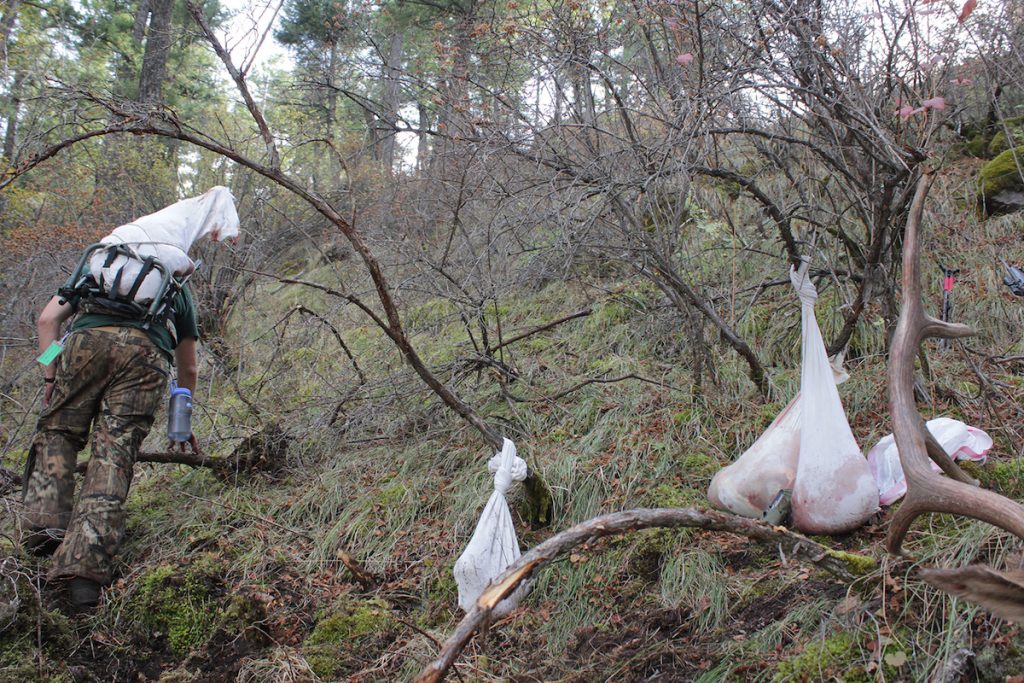
When it comes to elk hunting, my two biggest tips are to be in shape and be able to shoot with accuracy out to 400 yards. Elk have a giant kill zone, and hitting it at 400 yards with today’s rifle setups should be very doable for any serious elk hunter.
I’ve been in many elk camps over the years. Many hunters I’ve seen are so out of shape they can’t even get to where the elk are to begin hunting them. Others say they won’t shoot beyond 200 yards. Limit yourself, and the chances of killing a bull quickly diminishes.
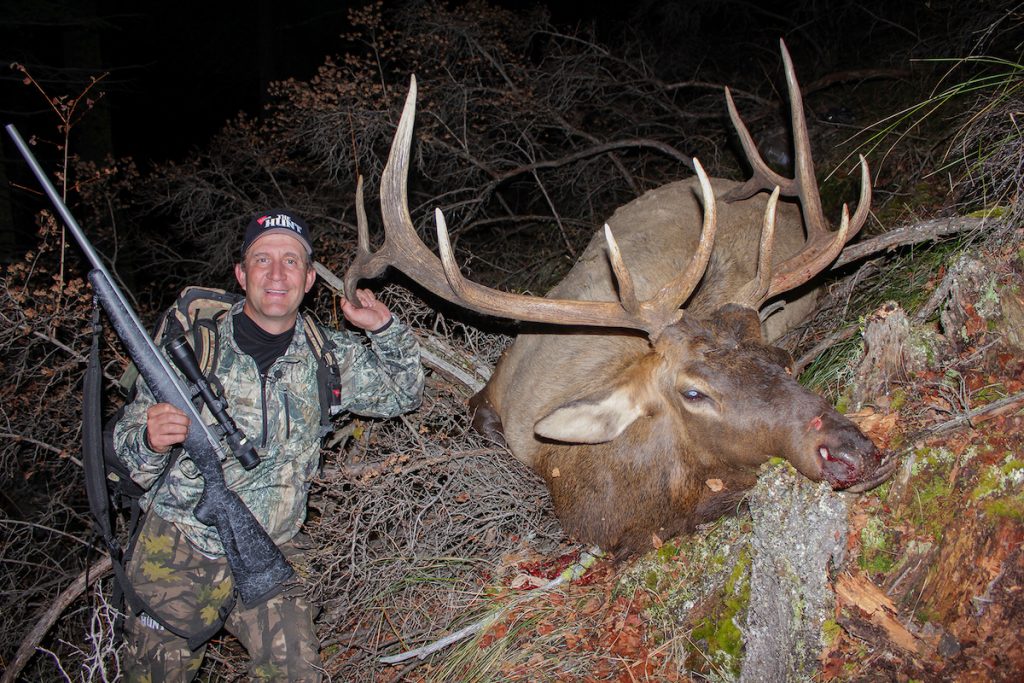
That’s not to say all elk hunts are brutal. They’re not. But most are.
One time my wife drew a prized Roosevelt elk tag. The season began August 1, when the bulls were still in velvet and following a daily routine. Patterning elk through scouting and trail cameras revealed where they’d be. She killed a dandy 6×6 the first morning of her hunt.
The weather was cold, wet, and windy on another Roosevelt elk hunt. When hunting these jungle-dwelling bulls, the harder it’s raining and the more intense it’s blowing, the better. High, consistent winds allow you to quickly cover ground as the waving foliage covers your movement. And the rain, it knocks down your scent. My buddy and I were on to a herd of Roosy’s, and he bailed off the mountain into a densely wooded draw. That’s where he killed a monster bull.
Timing is always important when it comes to elk hunting. One November, a buddy and I hunted at over 9,000 feet in a wilderness area in the Rocky Mountains. We were sure we’d hit the migration perfectly, but we didn’t.
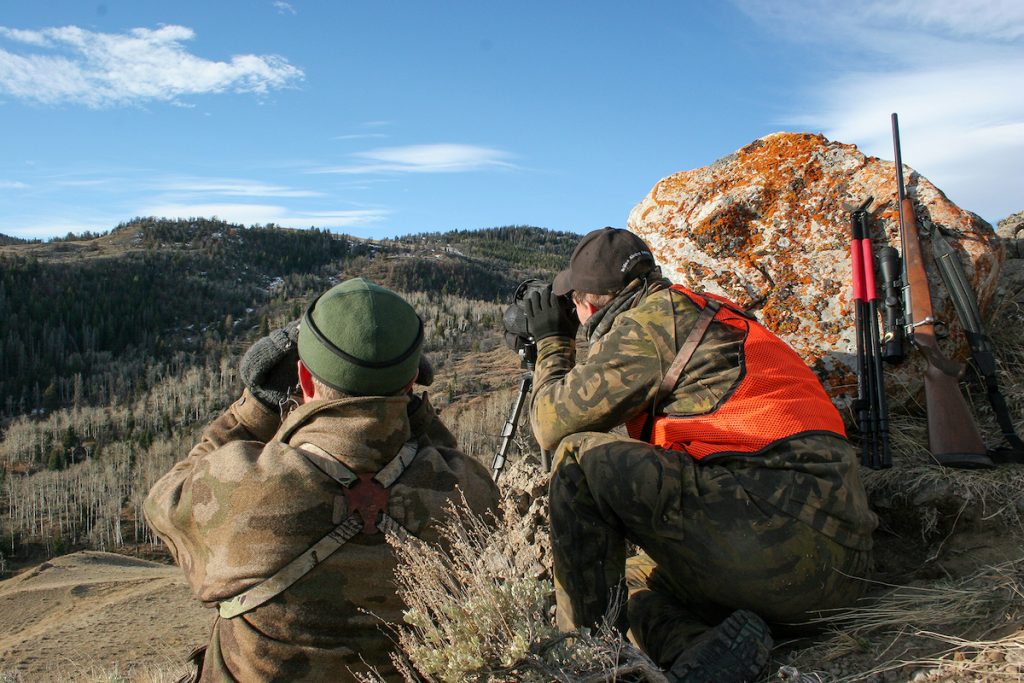
We hunted hard, relying on horses to get us to high glassing points every morning. On day four, we finally spotted a bull. It was across a massive drainage and took more than three hours to get to. The bull only had one side of its rack, but I didn’t care. There was a small bull with it when we caught up to it, and I shot the big one. We hunted hard and never saw another elk. Sometimes you take what you can get when it comes to elk hunting. Keep this in mind when hunting OTC units are those, which can be drawn every or every other year.
Now is the time to start preparing for elk season. Get in shape so you can cover ground and be able to shoot your rifle with accuracy and confidence at a distance. The better your physical ability, the more prime habitat you can hunt, and the greater the chance of finding elk. But be warned, the most challenging part of elk hunting begins once you pull the trigger and a bull hits the dirt.


